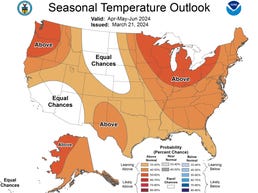States in the central and eastern portion of the U.S. are bracing for more severe weather Tuesday as a major storm system continues to move across the country.
The Ohio and Tennessee valleys face the highest risk for flash floods, long-track tornadoes and large hail, according to meteorologists, especially in the afternoon and evening hours. Over 100,000 households in Missouri, Indiana, Kentucky and Tennessee were without power Tuesday morning, according to a database maintained by USA TODAY.
With the risk of tornadoes possible for millions, and conditions often changing frequently, it is important to be aware of the difference between what forecasters call a tornado watch or a tornado warning.
Here’s what you should know about the difference between the terms tornado watch and tornado warning.
Tuesday weather:Storms could bring hail, possible tornadoes and more to parts of US
What is a tornado watch?
A tornado watch is an alert issued by the National Weather Service. It means that tornadoes are possible in and near the “watch” area.
A tornado watch is issued by the Storm Prediction Center for counties where tornadoes may occur, and the watch area is typically large, covering numerous counties or states.
If a tornado watch is issued in your area, the NWS says to be prepared and be ready to act quickly if the next level, a warning, is issued or if you suspect a tornado is approaching.
What is a tornado warning?
A tornado warning is the more serious and urgent of the two terms, and means a tornado has been sighted or indicated by weather radar. Tornado warnings are issued by your local forecast office, and typically cover a much smaller area than a tornado watch.
If there is a tornado warning, that means there is imminent danger to life and property and affected residents should take action now, the National Weather Service says.
You should move to an interior room on the lowest floor of a sturdy building and avoid windows. If you’re in a mobile home, vehicle or are outdoors, move to the closest “substantial” shelter and protect yourself from flying debris.
Contributing: Anthony Robledo and Christopher Cann, USA TODAY.
